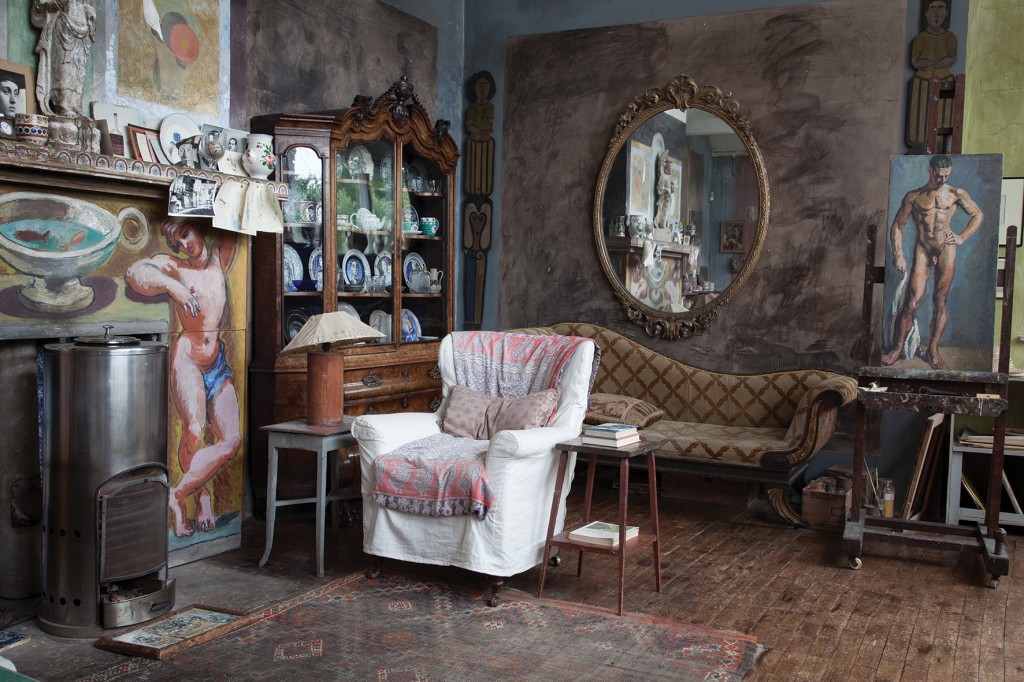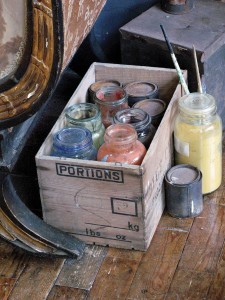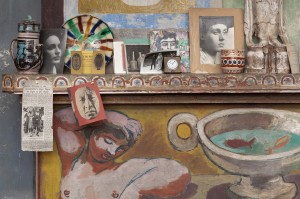
As you visit Charleston, home to the Bloomsbury group of artists, you cannot fail to be captivated by the extraordinary collection of art and the intimacy of this house and its stories. This week I am delighted to be returning to Charleston once more, to see it through the eyes of author Virginia Nicholson. Virginia has warm memories of happy summer holidays spent with her grandmother, Vanessa Bell, and Duncan Grant at Charleston.

Virginia describes how as a child visiting Charleston on holiday, she found it such a warm, freeing and welcoming place to be. “At Charleston you did art,” she says. “You engaged in the act of creation – messy was good – it was virtuous to create.” Virginia has only distant memories of her grandmother, the well-known artist Vanessa Bell. Her recollections of Vanessa’s lifelong love, Duncan Grant, however, are much more vivid. “There was something of the child in Duncan – innocent, open and benign – he always thought the best. He had an energy and appetite for life.” These playful, boyish qualities were expressed in games of charades and he was even known to dress up as a cow with coathangers for horns. “As children we were paid sixpence an hour to pose to be painted by Vanessa and Duncan,” Virginia explains. “Sometimes we got the fidgets!” There were just seven years between Duncan’s death and the opening of the house to the public in 1986. The house still has the evocative smells of books and turpentine, which Virginia describes as memories from her childhood. There is a tangible sense of continuity at Charleston, as though Vanessa or Duncan might appear in a doorway or the studio.
The house was cold, without even running hot water, when Vanessa and Duncan arrived in 1916. They set about creating an aesthetic whole. Here was a unified work of art, created by bringing together paintings, furniture, objects, ceramics and books. Charleston remains the most complete example of Bloomsbury group sensibilities, a piece of art out of time, set permanently in the 1950s. It is art to be inhabited, not something to be viewed with dispassion through the separation of time. Duncan Grant, David Garnett, Vanessa, her husband, Clive, and the children, Julian, Quentin and Angelica, all lived at Charleston and were often joined by visitors.
Charleston provided refuge for artists, writers and intellectuals during a tempestuous century, marked by the Great Depression and two world wars. Visitors included the writers T.S. Elliot, E.M. Forster and Lytton Strachey, the composer Benjamin Britten and his friend and muse, the tenor Peter Pears, as well the influential economist John Maynard Keynes. Keynes visited Charleston so often that he was given his own room. Roger Fry founded the Omega Workshops in 1913. Famous as an art critic, artist and organiser of the influential London Post-Impressionist exhibitions of 1910 and 1912, Fry was also regularly to be found at Charleston and contributed to the design of the house and garden.

Together they represent an extraordinary generation. Virginia concludes, “They questioned: how do we live our lives; what do we do; what do we seek? The house speaks eloquently of this. It is liberating and freeing.” It has always seemed to me important to remain questioning. At Charleston they lived out their lives being creative and inquisitive, rather than being content with the superficialities that today’s culture encourages.
With the August Bank Holiday approaching, treat yourselves to a summer holiday visit to the house and garden of Charleston, just across the border in East Sussex. Experience the lives of the artists, writers and intellectuals who lived, visited and were blessed by this most eloquent of houses. Virginia Nicholson has inherited the creative gifts of her forebears and works as an established and highly regarded author. Charleston a Bloomsbury house and garden, written by Virginia Nicholson with her father Quentin Bell, gives a very personal view of the lives and art of those who lived and visited Charleston and is lavishly illustrated. Her book Among the Bohemians – Experiments in Living 1900-1939 adds depth and insight into the lives and work of a generation of eccentric and free-spirited artists. Both are favourites of mine and are available from the Charleston shop, prices £18.99 and £10.99. For opening times and more information, go to www.charleston.org.uk/whats-on or telephone 01323 811626.You may be certain of a warm welcome as Charleston gathers you, as she has gathered generations of visitors before you.
By Revd. Rupert Toovey. Originally published on 21st August 2013 in the West Sussex Gazette.